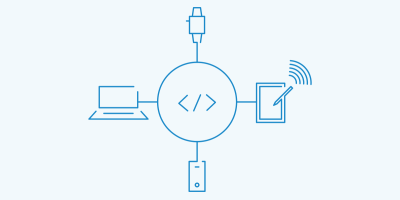Why Drupal Is the Right Choice for E-commerce
Collection :
“The idea that Amazon CEO Jeff Bezos has pioneered a new business paradigm is silly.”
That was the opening line of a 1999 Barron’s article titled Amazon.bomb in which the thinly veiled snark of a title mounted a prediction of Amazon’s failure — it couldn’t have been more wrong. Amazon is now worth approximately $1 trillion, and Barron’s is still being reminded of that article.
E-commerce has only gotten bigger in the decades since, and it’s growing at an exponential rate as technology advances. By the end of 2023, the global e-commerce industry will be worth $6.3 trillion and $8.1 trillion by 2026.
Investing in the right technologies to ensure the present and future success of your e-commerce business requires foundation building and forward thinking. At its core, e-commerce gives customers what they’re looking for from any device, removes the friction of the in-person shopping experience, and eases the process from browsing to purchasing.
Perfecting that customer journey and the digital experiences that permeate it demands care, because people probably don’t need your product. The internet is nothing if not full of other options, so use this chance to delight customers!
What are you doing to make customers and prospects choose you? Let me show you how Drupal for e-commerce is the piece of the puzzle that can set you apart, lending you a competitive edge now and in the future.
Considerations for building an e-commerce experience
The ultimate goal for building an excellent e-commerce experience? To get folks to buy your stuff. Many organizations stumble to reach that goal because they can’t effectively produce digital experiences that attract audiences and sales. There has to be a holistic approach to building an e-commerce experience. It comes with a few key considerations.
Your organization: You can’t put together a good e-commerce experience without thoroughly understanding your organization's current and future goals. You need a roadmap of what you want your e-commerce experience to look like and achieve, as well as an idea of how it can adapt, scale, and evolve with a shifting technological landscape and customer desires. Where are you going? Where have you been? How can your e-commerce experience help realize those goals?
Your customers: Well-defined products and organizational goals help reveal exactly who you’re targeting. Merely plopping your products out there and hoping customers come across them isn’t the vibe. You have to be deliberate with serving them relevant, magnetic experiences that make an impression. How does your e-commerce experience attract and retain customers?
Content: Content is and remains king. The content your organization creates is the edge you’ll have over competitors. Getting it in front of the right people at the right time and solving the most salient pain points is the most persuasive way to earn customers. Are you delivering personalized, data-informed content where your customers are? Competitive differentiation is often driven by content.
Technology: Technology brings it all together. It’s foundational to supporting organizational goals, key to identifying customers, and the source from which you deliver content. Technology that can be tailored to your needs and adapt to change is pivotal to powering a worthwhile e-commerce experience.
At the very least, a proper e-commerce solution will affect each element. A content management system (CMS) is an excellent decision across the e-commerce space.
But there are more than a few CMSs out there. Which one’s right for you?
Tips for choosing the best CMS for e-commerce
The quartet of considerations for delivering a solid e-commerce experience needs stable technology to stand on. A good CMS can get it right, but there are certain capabilities to look for in a CMS that elevate one over the others.
Content distribution: Your customers are everywhere, and they interact with brands through different digital media. Find a CMS that doesn’t publish content only to a website. Flexible content distribution is the present and future of e-commerce, and the more devices and platforms through which people can access your brand, the more marketing touchpoints you have available.
Rapid deployment: Give your marketers the power to create, change, and deploy content faster by adopting a CMS that doesn’t lean on developers to put content together. Low-code and no-code CMS options play a huge part in empowering marketing teams to build beautiful content in a user-friendly environment, speeding up the content creation lifecycle as a whole.
Automation: Take the busy work out of your e-commerce experience. A good CMS allows you to implement automated workflows so your teams can focus on creating things that matter. It’s also helpful for the customer journey because it keeps audiences automatically engaged with your content across different channels and stages of their journey.
Drupal e-commerce options
If you’re using those capabilities as a checklist, Drupal has your back. There are a handful of ways the open source software can help cover your bases (and then some).
Headless
This term refers to separating the front-end presentation layer from the back-end content database. Where a traditional CMS might publish content only to a website, a headless CMS can publish to whatever channels you want to display content on via APIs.
Headless e-commerce is a great choice for modern organizations, because today’s businesses rarely publish to just one digital medium. A headless CMS enables you to create content in one place and distribute it to any channel. As different technologies come into play, a headless CMS ensures your ability to keep up and push your content to any number of different media.
Hybrid
The hybrid, or decoupled, CMS is what we fondly refer to as the best of both worlds when it comes to combining a traditional CMS with a headless CMS. In a hybrid solution, users can create and store content via low code tools and then store that content for deployment either to the front-end rendering layer built into the CMS or to diverse channels through APIs.
The hybrid CMS is growing in popularity because any team can create content quickly using tools that don’t require a computer science background. What’s more, as the number of digital media grows, a hybrid CMS can publish content to any front end. That’s an attractive option in e-commerce because it allows you to reach customers across numerous devices, applications, and so on while maintaining rapid content iteration, product additions/adaptations, and cross-platform management.
Composable commerce
Every e-commerce business has different needs to meet, so why not compose your own solution? Our partners have worked with some of the most recognizable names in e-commerce technology to develop solutions that fit the needs of both B2B and B2C spaces.
Shopify Plus: Powered by Third and Grove and Acquia, the Shopify Plus integration is both flexible and scalable; it can be tailored to evolving consumer needs and organizational goals. With Shopify staples like AI-powered search, chat, localized checkout with 100+ payment vendors, and beyond, the integration optimizes the e-commerce experience.
Commerce Factory: Using commercetools’ leading e-commerce platform, TA Digital and Acquia built Commerce Factory to power a frictionless e-commerce experience. Create and manage multiple brand sites from one place, optimize products and promotions across sites, enable multiple payment types, and track performance across products. Commerce Factory simplifies e-commerce development, helping you reach customers faster with pleasant shopping experiences that drive sales.
Drupal Commerce: This is the e-commerce flavor of Drupal that extends upon its out-of-the-box capabilities to add certain e-commerce functionalities like order fulfillment, shopping carts, payment integrated checkout, etc. With more than 100 free integrations, Drupal Commerce works with leading payment and commerce platforms to make sure that your online store has everything you need to deliver exceptional customer experiences. And, since it’s part of the Drupal universe, hundreds of contributors are working constantly to make the platform better every day.
Drupal for e-commerce wins
There’s a plethora of reasons Drupal is the answer for e-commerce, and we’ve got some IRL proof to back it up.
- Lush Cosmetics: The British cosmetics company always had a cool brick-and-mortar space to call home, but their online presence didn’t seem to follow the in person popularity. Their values aligned with Drupal and they redesigned their web presence, which gained them a 75% increase in web sessions along with a 64% boost in online orders.
- King Arthur Baking Company: The at-home baking boom spurred by the pandemic had King Arthur thinking that they needed to up their digital game to support an influx of baking newbies. They worked with Acquia and Third and Grove to revamp their digital presence and saw a 260% web session increase along with a 200% increase in year over year e-commerce sales!
The list of Drupal wins for e-commerce (and beyond) can take up a lot of space, but this is a taste of how it’s gone in a couple of instances.
What’s next?
Drupal for e-commerce has the power to help your business thrive in a crowded industry. With the right technical chops to support your organization’s goals and customer expectations, you stand to join the ranks of the biggest brands on the planet.
Still curious? We’d be happy to chat with you about Drupal for e-commerce, share success stories, and figure out exactly how we could tailor a Drupal solution that fits your e-commerce needs.




